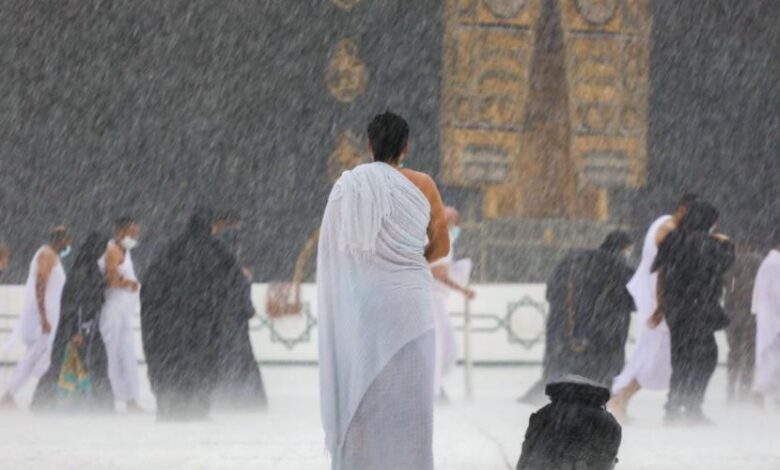January, Saudi Arabia's Highest Rainfall in 40 Years

DDHK. ORG – Rainfall in Saudi Arabia is high. January 2022 will be the month with the highest rainfall in the last 40 years Saudi Arabia. The Ministry of Environment, Water and Agriculture of Saudi Arabia revealed that the average rainfall in all regions of Saudi Arabia during January reached a record high of 23,58 millimeters (mm), the highest ever received in the last 40 years.
As reported Republika which launched the Saudi Gazette page, Wednesday (1/3/2023), this condition is also higher than the average recorded in the same month in 2022. Last year's rainfall was 15,41 millimeters, according to the records of the ministry's hydrology monitoring station.
The ministry said this in its report related to monitoring the amount of rainfall and the volume of heavy water entering and leaving dams on the territory of the Kingdom during January 2023. The Jeddah port station in the Makkah region recorded the highest rainfall reading, amounting to 84,6 mm on the first day of January .
The report shows the total water fall from the eruption that reached the dam in January amounted to around 182,7 million cubic meters. Meanwhile, the total volume of water released from it is 108,9 million cubic meters.
The ministry stated that the dams in the Makkah region accounted for the largest share of the incoming torrential water as its volume exceeded 70,9 million cubic meters. The Rabigh Dam in the Makkah region witnessed the highest amount of inflow with around 48,7 million cubic meters. Meanwhile, the Turbah Dam recorded the highest release of 15,2 million cubic meters.
Rainfall During Ramadan
Precipitation rate during the holy month Ramadhan in most parts of Saudi Arabia it is predicted to be higher. This information was conveyed by a weather analyst at the National Meteorological Center (NCM), Aqeel Al-Aqeel.
Reported in the Saudi Gazette, Thursday (2/3/2023), Al-Aqeel said the weather conditions at the start of Ramadan will be moderate in the northern, eastern and central regions of the Kingdom of Saudi Arabia.
This year's Ramadan is said to coincide with spring. So, the rate of rainfall will increase, the temperature will also increase by one degree Celsius.
Al-Aqeel added that this temperature will be one and a half degrees Celsius higher in the Tabuk, Al-Jouf and Salam areas. Not only that, he also said, the maximum temperature will increase at the end of Ramadan in the Makkah region and its coast.
The National Meteorological Center will issue a more detailed report on weather conditions before Ramadan.
For Ramadan this year, the Middle East region is predicted to observe fasting for 13 hours. This was conveyed by the Directorate General of Islamic Affairs and Waqf of the United Arab Emirates (UAE).
In addition to shortening the fasting time, this year's fast also coincides with winter. Chairman of the Board of Directors of the Emirates Astronomical Society, Ibrahim Al Jarwan, said the temperature was expected to be much cooler as the holy month would fall in early spring.
"Al Sarayat's spring weather disturbances can also occur during Ramadan, which can cause heavy rains," he said. [DDHK News]



